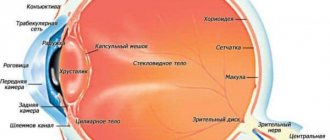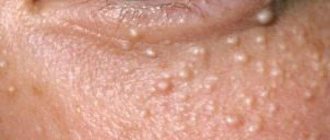Quick Transition Treatment of Addison's Disease
Addison's disease (hypocorticism, chronic adrenal insufficiency) is a rare disease characterized by insufficient production of the glucocorticoid hormone cortisol and the mineralocorticoid hormone aldosterone by the adrenal glands.
Most often, hypocortisolism, which affects both men and women, occurs at the age of 30-50, but the onset (first clinical manifestation) of the disease can be observed at any age.
The worldwide prevalence of Addison's disease is 40-60 patients diagnosed with AD per 1 million people.
Causes
Typically, Addison's disease occurs due to damage or destruction of the adrenal cortex as a result of the development of an autoimmune process (the immune system perceives the adrenal cortex as foreign, attacks and destroys it) or another autoimmune disease that the patient has.
Other causes of the disease include:
- tuberculosis (mainly in developing countries);
- other (secondary, for example fungal) infections;
- malignant tumors (with the spread of tumor cells from the primary focus, lymphoma);
- bleeding in the adrenal glands (adrenal infarction);
- genetic predisposition (in rare cases).
Deficiency of glucocorticoid and mineralocorticoid hormones caused by decreased function of the adrenal cortex is called primary adrenal insufficiency. If the adrenal glands are unable to produce these hormones for other reasons (for example, due to pituitary gland abnormalities or dysfunction), we are talking about secondary adrenal insufficiency.
Adrenal tuberculosis
Adrenal tuberculosis is a rare pathology. It is characterized by the accumulation of calcifications in the tissues of the adrenal glands.
More often diagnosed in childhood and adolescence. The reason is the penetration of the tuberculosis bacillus from the infected lungs into the adrenal glands through the general bloodstream.
Symptoms of adrenal tuberculosis:
- low blood pressure;
- disruption of the gastrointestinal tract, expressed by diarrhea, nausea with vomiting attacks;
- hypoglycemia;
- constant weakness, feeling tired;
- myocardial dystrophy.
Symptoms
Addison's disease progresses slowly over several months. Symptoms may vary from person to person. The first clinical manifestations are often nonspecific, that is, similar to the symptoms of other common diseases.
Usually in the initial stages of the disease the patient does not feel any symptoms. Unfortunately, the onset of AD is associated with 90% damage to the adrenal cortex.
Symptoms of Addison's disease include:
- increased fatigue;
- decreased energy;
- general malaise;
- hyperpigmentation of the skin, affecting the palmar sweets, phalanges of the fingers, scars, mucous membranes of the oral cavity, friction points;
- skin pigmentation disorder (vitiligo);
- decreased appetite and weight loss;
- dehydration;
- low weight and retarded physical development (in children);
- craving for salt or salty foods;
- nausea, vomiting;
- abdominal pain, diarrhea;
- fainting;
- muscle and joint pain;
- irritability, decreased concentration, depression;
- alopecia areata;
- hair loss in some areas of the body, dry skin, decreased libido, menstrual irregularities (in women);
- hypoglycemia (decreased blood glucose concentration);
- postural hypotension (a sharp decrease in blood pressure when body position changes).
Sometimes Addison's disease, which has not manifested itself before, can occur suddenly and acutely - for example, in the absence of necessary treatment or as a result of exposure to stress factors (accident, injury, surgery), infection, or other disease. In this case, we are talking about a life-threatening condition - the so-called. Addisonian crisis or acute adrenal insufficiency. Characteristic signs: severe weakness, confusion, pain in the back, legs and abdomen, vomiting and diarrhea, low blood pressure, hyperkalemia, hyponatremia.
Publications in the media
Addison's disease (bronze disease, chronic adrenal insufficiency) is a chronic insufficiency of the adrenal cortex that occurs when they are damaged bilaterally, leading to a decrease (or complete cessation) of the secretion of GC and mineralocorticoids. Addison's disease occurs when more than 90% of the adrenal tissue is affected. In 80% of cases, the cause of the disease is an autoimmune process, followed by tuberculosis in frequency. As a syndrome, chronic adrenal insufficiency is present in a variety of inherited diseases. Statistical data. In the United States, it is approximately 4–6:100,000. Idiopathic autoimmune Addison's disease affects women more often than men.
Etiology and pathogenesis. 80% of cases are autoimmune damage to the adrenal cortex, 10% are adrenal tuberculosis. Other, more rare causes: • Iatrogenic causes (bilateral adrenalectomy, consequences of long-term GC therapy) • Fungal diseases (histoplasmosis, blastomycosis, coccidioidomycosis) • Sarcoidosis • Hemorrhages into the adrenal glands • Tumors • Amyloidosis • Acquired immunodeficiency syndrome (AIDS) - due to CMV and other infectious lesions of the adrenal glands • Syphilis • Adrenoleukodystrophy. It is accompanied by an increase in the level of ACTH, together with a-melanocyte-stimulating hormone, causing hyperpigmentation of the skin and mucous membranes - a hallmark of Addison's disease, for which reason it is also called bronze disease.
Secondary adrenal insufficiency is caused by pituitary insufficiency (ACTH deficiency); unlike primary, it is never accompanied by hyperpigmentation.
Genetic aspects. Manifestations of Addison's disease are observed in a number of inherited conditions • Adrenoleukodystrophy • Congenital Addison's disease (103230, Â): skin hyperpigmentation, hypernatriuria, hypokaliuria • Familial hypoadrenocorticism (*240200, r): vomiting, skin pigmentation, seizures, vascular collapse, hypoglycemia, hyponatremia , hyperkalemia • Familial adrenal hypoplasia (*300200, Xp21.3–p21.2, DAX1, r gene defects) • GK receptor defects (*138040, 5q31, GRL gene, Â; also *202200 [MC2R gene defect, 18p11 .2, r]): no response to ACTH, arterial hypertension; severe arterial hypertension and hypokalemic alkalosis in homozygotes • Glycerol kinase deficiency (307030) • Allgrove's syndrome (syndrome 3A [from: Adrenal insufficiency, Achalasia, Alacrimia], *231550, r): Addison's disease, achalasia, alacrimia; the adrenal glands lack the zona reticularis • Autoimmune polyglandular syndrome.
Risk factors • Adrenal insufficiency of an autoimmune nature in relatives (first or second degree) • Treatment with GC for a long time, as well as severe infections, injuries or surgical interventions.
Clinical manifestations. The clinical picture consists of signs of GC and mineralocorticoid deficiency. The predominance of certain manifestations is determined by the duration of the disease.
• Hyperpigmentation of the skin and mucous membranes (in primary failure) often precedes other clinical manifestations by months or years. The simultaneous presence of vitiligo due to autoimmune destruction of melanocytes is possible.
• General symptoms: severe weakness (primarily muscle), fatigue, weight loss, poor appetite.
• Arterial hypotension, especially orthostatic, is accompanied by dizziness and sometimes syncope episodes. Also, due to hypotension, patients note poor tolerance to cold.
• Signs of gastrointestinal damage: nausea, vomiting, episodic diarrhea.
• Possible mental disorders (depression, psychosis).
• Strengthening gustatory, olfactory, auditory sensitivity; An irresistible desire for salty food may appear.
Adrenal (adrenal) crises. They are based on a sudden deficiency of GC and mineralocorticoids due to an increase in the need for them or a sudden decrease in their production against the background of pre-existing chronic adrenal insufficiency. Causes • Stress (25% of cases): acute infectious disease, trauma, surgery, emotional stress and other stressful effects; adrenal crises in these situations are provoked by the lack of an adequate increase in doses of hormone replacement therapy. In addition, it should be borne in mind that when prescribing inducers of microsomal liver enzymes (for example, rifampicin), the dose of hormones must be adjusted • Bilateral hemorrhage in the adrenal glands - see Waterhouse-Friderichsen syndrome • Bilateral embolism of the adrenal arteries or thrombosis of the adrenal veins (for example, during radiocontrast studies) • Bilateral adrenalectomy without adequate replacement therapy.
Manifestations: arterial hypotension, abdominal pain, vomiting and disturbances of consciousness. Laboratory changes - hypoglycemia, hyponatremia, hyperkalemia, metabolic acidosis.
Concomitant pathology • Diabetes • Thyrotoxicosis • Thyroiditis • Hypoparathyroidism • B12-deficiency anemia • Ovarian dysfunction • Hypercalcemia • Chronic candidiasis.
Laboratory data. Diagnosis of chronic adrenal insufficiency comes down to identifying insufficient functional capabilities of the adrenal cortex (increase the synthesis of cortisol in response to stimulating influences).
• Short test with ACTH. The content of cortisol in the blood serum is determined before and 30 minutes after the intravenous administration of corticotropin (0.25 mg). If the patient does not have Addison's disease, the serum cortisol concentration increases by at least 7 mcg% (reaching 18 mcg% or more), and after 30-60 minutes reaches 20 mcg% or more. In Addison's disease, the concentration increases slightly or does not change.
• Standard ACTH test (more accurate). ACTH (25–40 units) is administered intravenously over 8 hours. The day before the study and on the day of the study, the content of free cortisol (or 17-hydroxycorticosteroids) in 24-hour urine is determined. The concentration of cortisol in the blood serum is also determined immediately before the administration of ACTH and after 6–8 hours. To prevent the development of adrenal insufficiency in the patient, dexamethasone (0.5 mg every 6 hours) is administered during the test. Normally, urinary excretion of corticosteroids increases 3–5 times, and the concentration of cortisol in the blood serum increases to 15–40 μg%. In Addison's disease, the increase is slight (or absent)
Additionally: • Hyponatremia (less than 130 mmol/l) • Hyperkalemia (more than 5 mmol/l) • Increased blood urea nitrogen • Hypoglycemia • Decreased cortisol, increased renin levels (radioimmunoassay) • Increased ACTH levels (in case of secondary deficiency - decreased ) • Decreased concentration of 17-hydroxycorticosteroids in urine • Moderate neutropenia and eosinophilia.
Instrumental data • CT scan of the abdominal cavity •• Small size of the adrenal glands (atrophy or a consequence of long-term tuberculosis) •• Enlargement of the adrenal glands (early stage of tuberculosis or other potentially curable diseases) • X-ray of the abdominal organs: may reveal calcification of the adrenal glands • X-ray of the chest: identification of possible adrenal calcification and reduction in heart size • ECG: low-voltage QRS complex with nonspecific changes in the T wave and ST segment; sometimes changes characteristic of hyperkalemia.
Diagnostic tactics. Characteristic clinical manifestations (hyperpigmentation in combination with arterial hypotension and other signs) suggest a diagnosis. To confirm it, it is necessary to consistently conduct laboratory and instrumental examinations.
Differential diagnosis • Myopathies • Hypoglycemia due to other causes • Syndrome of inappropriate secretion of antidiuretic hormone (ADH) • Salt-wasting form of adrenogenital syndrome • Heavy metal poisoning • Hemochromatosis • Anorexia nervosa • Sprue • Hyperparathyroidism.
TREATMENT
Lead tactics. Treatment of adrenal insufficiency using gluco- and mineralocorticoid replacement therapy. Appropriate treatment of the underlying disease (eg, tuberculosis). Emergency treatment of adrenal crisis.
The mode is outpatient, in case of adrenal crisis - emergency hospitalization.
Diet. A sufficient amount of proteins, fats, carbohydrates and vitamins, especially C and B1 (rosehip decoction, black currant, yeast are recommended). Table salt is consumed in increased quantities (20 g/day). The content of potassium salts is reduced to 1.5–2 g/day. The diet reduces the content of potatoes, peas, beans, beans, dried fruits, coffee, cocoa, chocolate, nuts, and mushrooms. Vegetables, meat, and fish must be consumed boiled. The diet is divided; a light dinner (a glass of milk) is recommended before bedtime to prevent a hypoglycemic state in the morning.
Drug therapy. The goal of pharmacotherapy is to reduce the incidence of complications and mortality.
• Treatment of chronic adrenal insufficiency is replacement therapy with GCs and mineralocorticoids. Hydrocortisone and fludrocortisone are used •• Hydrocortisone 10 mg in the morning and 5 mg orally daily after lunch (adults up to 20–30 mg/day) •• Fludrocortisone 0.1–0.2 mg orally 1 time per day. With the development of arterial hypertension, its dose should be reduced. In acute illness or after a minor injury, the dose of steroid hormones is doubled until you feel better. During surgical treatment, before and (if necessary) after surgery, the dose of steroid hormones is adjusted. In case of liver diseases, as well as in elderly patients, the dose of drugs should be reduced.
• Treatment of adrenal crisis 1) Emergency provision of venous access with intravenous infusion of 0.9% sodium chloride solution until dehydration and hyponatremia are eliminated. 2) Hydrocortisone - 100 mg immediately IV over 5 minutes, then infusion of 300 mg over 24 hours (100 mg in the first 2 hours); On the second day, 150 mg is usually administered, on the third - 75 mg. Clinical improvement (assessed primarily by blood pressure recovery) usually occurs after 4–6 hours of infusion. If there is no improvement, the diagnosis should be reconsidered. 3) Identification and elimination of the provoking factor. 4) During rehydration, hyperthermia and psychotic reactions often develop • For hyperthermia (against the background of normal blood pressure), antipyretics are prescribed, for example, acetylsalicylic acid 500 mg every 30 minutes until the body temperature decreases • If psychotic reactions develop after the first 12 hours of treatment, the dose of hydrocortisone should be reduced to the minimum effective.
Long-term observation. Lifelong medical supervision is indicated to constantly monitor the adequacy of the therapy and to exclude an overdose of hormones taken. The adequacy of therapy is assessed using the following parameters: blood pressure, heart rate, concentration of electrolytes in the blood plasma, plasma renin content, appetite, physical activity, fasting blood glucose concentration.
The patient must be provided with complete information about the clinical manifestations of adrenal crisis, incl. and early, in order to be able to timely increase the dose of hormones taken and prevent the development of serious symptoms • If nausea and vomiting prevent the intake of drugs orally, the patient should seek medical help for parenteral therapy • During surgical interventions, it is necessary to adjust the dose of steroid hormones • Should be avoided infectious diseases.
Complications • Adrenal (adrenal) crisis • Hyperkalemic periodic paralysis (rare) • Reactive psychoses.
Forecast. Favorable with adequate therapy. Life expectancy is close to normal.
Age characteristics • Children: •• Diagnosis is more difficult •• Develops in siblings (siblings) •• Doses of hydrocortisone and fludrocortisone should be lower than in adults • Elderly. Adrenal crisis occurs more often.
ICD-10 • E27.2 Addison's crisis • E27.1 Primary adrenal insufficiency • A18.7+ Adrenal tuberculosis (E35.1*)
Note. Addisonism - symptoms of Addison's disease without damage to the adrenal cortex.
Application. Alacrimia - lack of tear production, discomfort in the eye area; leads to the development of xerophthalmia, clouding of the cornea. A congenital form is known (*103420), the result of hypoplasia of the lacrimal gland. Alacrimia also accompanies Lesch-Nyen syndrome and ectodermal anhydrotic dysplasia. ICD-10. H04.1 Other diseases of the lacrimal gland.
Diagnostics
The diagnosis is established based on the patient’s medical history, complaints and symptoms, and the results of laboratory and instrumental diagnostics (CT, MRI).
Blood tests are aimed at determining the levels of sodium, potassium, cortisol and adrenocorticotropic hormone (ACTH), which stimulates the production of hormones by the adrenal cortex, as well as identifying specific antibodies associated with Addison's disease.
The patient may be prescribed an ACTH stimulation test, during which adrenocorticotropic hormone is administered (to stimulate cortisol production). If stimulation does not produce normal levels of cortisol, this indicates adrenal damage or dysfunction.
An insulin-induced hypoglycemic test is also performed , which helps to establish the relationship between the characteristic symptoms of Addison's disease and pituitary gland abnormalities or dysfunction. During this test, the patient is injected with fast-acting insulin, and blood sugar levels are measured before and after the injection.
To assess the function of the adrenal glands and their structural features, additional imaging is performed using CT and MRI. These studies help clarify the characteristic changes observed during the development of Addison's disease.
Other animals
Main article: Hypoadrenocorticism in dogs
Hypoadrenocorticism is rare in dogs,[41] and is rare in cats, with fewer than 40 cases of the disease known in cats worldwide since it was first documented in 1983.[42][43] Isolated cases have been reported in the gray seal,[44] the red panda,[45] the flying fox,[46] and the sloth.[47]
In dogs, hypoadrenocorticism has been diagnosed in many breeds.[41] Vague symptoms that wax and wane may cause a delay in recognizing the presence of the disease.[48] Females are more susceptible to the disease than males, although this may not be the case for all breeds.[48][49] The disease is most often diagnosed in young to middle-aged dogs, but can occur at any age from 4 months to 14 years.[48] Treatment for hypoadrenocorticism must replace hormones (cortisol and aldosterone) that the dog cannot produce itself.[50] This is achieved by either daily treatment with fludrocortisone, or monthly injections with deoxycorticosterone pivalate (DOCP) and daily treatment with glucocorticoids such as prednisone.[50] Several follow-up blood tests are required so that the dose can be adjusted until the dog receives the correct amount of treatment because medications used in hypoadrenocorticism therapy can cause excessive thirst and urination if not prescribed at the lowest effective dose.[50] ] Dogs require increased dosage of prednisone in anticipation of stressful situations, such as being confined to a pen.[50] Lifelong treatment is required, but the prognosis for dogs with hypoadrenocorticism is very good.[48]
Differential diagnosis
Most often, Addison's disease is differentiated (distinguished) from the following diseases:
- secondary adrenal insufficiency caused by a decrease in the production of adrenocorticotropic hormone by the pituitary gland;
- congenital adrenal hyperplasia (a group of hereditary pathologies arising due to impaired cortisol biosynthesis);
- adrenoleukodystrophy (hereditary degenerative disease of the central nervous system, which is transmitted in an X-linked recessive manner and is associated with adrenal insufficiency);
- autoimmune polyendocrine syndrome type 2 (Schmidt syndrome, a rare autoimmune disease in which there is a sharp decrease in the function of several endocrine organs: adrenal glands, thyroid gland, parathyroid glands, gonads, pancreas);
- autoimmune polyendocrine syndrome type 1 (a rare genetic syndrome APECED, which is characterized by lesions of the skin and mucous membranes by Candida fungi, decreased function of the parathyroid glands and autoimmune insufficiency of adrenal function).
Recommendations
- ^ a b c d e f gram h i j k l m p o p q r s t you v w X y z aa
“Adrenal insufficiency and Addison’s disease.” National Institute of Diabetes and Digestive and Kidney Diseases. May 2014. Archived from the original March 13, 2021. Retrieved March 13, 2021. - ^ a b
Napier, Catherine;
Pearce, Simon H.S. (June 2014). "Current and new treatments for Addison's disease." Current Opinion in Endocrinology, Diabetes and Obesity
.
Philadelphia, PA: Lippincott Williams & Wilkins Ltd. 21
(3): 147–53. Doi:10.1097/med.0000000000000067. PMID 24755997. S2CID 13732181. - ^ a b c
Brandao Neto, RA;
de Carvalho, J. F. (2014). "Diagnostics and classification of Addison's disease (autoimmune adrenalitis)." Reviews about autoimmunity
.
13
(4–5): 408–11. Doi:10.1016/j.autrev.2014.01.025. PMID 24424183. - ^ a b c d f
"Addison's disease."
NORD (National Organization for Rare Diseases)
. Retrieved 2020-12-01. - ^ a b
Adam, Andy (2014).
Diagnostic Radiology by Granger and Ellison
(6th ed.). Elsevier Health Sciences. item 1031. ISBN 9780702061288. Archived from the original March 14, 2021 - Neufeld, Michelle; McLaren, Noel K.; Blizzard, Robert M. (September 1981). "Two types of autoimmune Addison's disease associated with different polyglandular autoimmune (PGA) syndromes:". Medicine
.
60
(5): 355–362. Doi:10.1097/00005792-198109000-00003. ISSN 0025-7974. - Napier, Catherine; Pearce, Simon H.S. (December 2012). "Autoimmune Addison's disease." Presse Médicale
.
Amsterdam, Netherlands: Elsevier. 41
(12 p. 2): e626-35. doi:10.1016/j.lpm.2012.09.010. PMID 23177474. - Rajagopalan, Murray Longmore, Ian B. Wilkinson, Supraj R. (2006). Mini-Oxford Handbook of Clinical Medicine
(6th ed.). Oxford: Oxford University Press. item 312. ISBN 9780198570714. Archived from the original March 14, 2016 - Rose, Noel R.; Mackay, Ian R. (2014). Autoimmune diseases
(5th ed.). San Diego, CA: Elsevier Science. item 605. ISBN 9780123849304. Archived from the original March 14, 2021 - ^ a b c d f f gram hour
Ten S, New M, Maclaren N (2001).
"Clinical Review 130: Addison's Disease, 2001." Journal of Clinical Endocrinology and Metabolism
.
86
(7):2909–2922. doi:10.1210/jc.86.7.2909. PMID 11443143. - "Addison's disease." NORD (National Organization for Rare Diseases)
. Retrieved October 6, 2021. - ^ a b c d
"Addison's disease." National Endocrine and Metabolic Diseases Clearinghouse. Archived from the original October 28, 2007. Retrieved October 26, 2007. - Freeman, Lynette K.; Chanco Turner, Maria L. (2006). "Addison's disease." Dermatology clinics
.
Amsterdam, Netherlands: Elsevier. 24
(4): 276–280. doi:10.1016/j.clindermatol.2006.04.006. PMID 16828409. - de Herder WW, van der Lely AJ (May 2003). "Addison's crisis and relative adrenal insufficiency". Reviews in Endocrine and Metabolic Disorders
.
4
(2): 143–7. Doi:10.1023/A: 1022938019091. PMID 12766542. S2CID 33794590. - ^ a b
Freeman, Hugh James (2016).
"Endocrine manifestations in celiac disease." World Journal of Gastroenterology
(Review).
Pleasanton, CA: Baishideng Publishing Group. 22
(38):8472–8479. doi:10.3748/wjg.v22.i38.8472. PMC 5064028. PMID 27784959. - Zhernakova Alexandra; Witoff, Sebo; Weimenga, Ciska (2013). "Clinical implications of the general genetics and pathogenesis of autoimmune diseases". Nature Reviews Endocrinology
(Review).
Berlin, Germany: Springer Nature. 9
(11): 646–59. Doi:10.1038/nrendo.2013.161. PMID 23959365. S2CID 28336180. - Denham, Jolanda M.; Hill, Ivor D. (2013). "Celiac disease and autoimmunity: review and controversies." Current Allergy and Asthma Reports
(Review).
Berlin, Germany: Springer Science + Business Media. 13
(4): 347–53. doi:10.1007/s11882-013-0352-1. PMC 3725235. PMID 23681421. - “Autoimmune polyglandular syndrome type 1 | Genetic and Rare Diseases Clearinghouse (GARD) - NCATS Program.” rarediseases.info.nih.gov
. Archived from the original April 12, 2021. Retrieved June 26, 2017. - “Autoimmune polyglandular syndrome type 2 | Genetic and Rare Diseases Clearinghouse (GARD) - NCATS Program.” rarediseases.info.nih.gov
. Archived from the original April 13, 2021. Retrieved June 26, 2017. - Winqvist O., Karlsson F.A., Kempe O. (June 1992). "21-hydroxylase, the major autoantigen in idiopathic Addison's disease." Lancet
.
339
(8809):1559–62. Doi:10.1016 / 0140-6736 (92) 91829-V. PMID 1351548. S2CID 19666235. - Husebye, Eystein S.; Perheentupa, J; Rautemaa, R; Kempe, O. (May 2009). "Clinical manifestations and management of patients with autoimmune polyendocrine syndrome type I." Journal of Internal Medicine
.
265
(5):514–29. Doi:10.1111/j.1365-2796.2009.02090.x. PMID 19382991. S2CID 205339997. - Kennedy, Ron. "Addison's disease." Medical library of doctors. Archived from the original on April 12, 2013. Retrieved April 10, 2013.
- Laureti S, Casucci G, Santeusanio F, Angeletti G, Auburg P, Brunetti P (1996). "X-linked adrenoleukodystrophy is a common cause of idiopathic Addison's disease in young adult male patients." Journal of Clinical Endocrinology and Metabolism
.
81
(2):470–474. Doi:10.1210/jc.81.2.470. PMID 8636252. - Quinkler M, Dahlqvist P, Husebye ES, Kämpe O (January 2015). “The European Adrenal Insufficiency Emergency Card can save lives.” Eur J Intern Med
.
26
(1): 75–6. doi:10.1016/j.ejim.2014.11.006. PMID 25498511. - ^ a b c
Michels A., Michels N. (April 1, 2014).
"Addison's disease: principles of early detection and treatment." Am Fam Doctor
.
89
(7):563–8. PMID 24695602. Archived from the original dated September 5, 2015. - White, Catherine (28 July 2004). "What to do in an emergency - Addisonian crisis." Self-help group for Addison's disease.
- “Nutrition, Diet and Nutrition for Adrenal Insufficiency and Addison’s Disease | NIDDK." National Institute of Diabetes and Digestive and Kidney Diseases
. Retrieved 2020-12-03. - "Adrenal insufficiency and Addison's disease." National Endocrine and Metabolic Diseases Clearinghouse. Archived from the original April 26, 2011. Retrieved November 26, 2010.
- "Addison's Disease - Treatment." NHS Choices. Archived from the original October 9, 2021. Retrieved October 8, 2021.
- Bergthorsdottir, Ragnhildur; Leonsson-Zakrisson, Maria; Oden, Anders; Johannsson, Gudmundur (1 December 2006). "Premature mortality in patients with Addison's disease: a population-based study." Journal of Clinical Endocrinology and Metabolism
.
91
(12):4849–4853. doi:10.1210/jc.2006-0076. ISSN 0021-972X. PMID 16968806. - Dimitrios Chantzichristos; Anders Persson; Bjorn Eliasson; Mervete Miftaraj; Stefan Franzen; Ragnhildur Bergthorsdottir; Sofia Gudbjornsdottir; Anne-Marie Svensson; Guðmundur Johansson (1 April 2016). Cushing's syndrome and primary adrenal diseases
. Abstracts of the meetings. Endocrine Society. S. OR25–4 – OR25–4. doi:10.1210/endo-sessions.2016.ahpaa.9.or25-4 (inactive 11/10/2020).CS1 maint: DOI inactive as of November 2021 (link) - Bergthorsdottir, Ragnhildur; Leonsson-Zakrisson, Maria; Oden, Anders; Johannsson, Gudmundur (12/01/2006). "Premature mortality in patients with Addison's disease: a population-based study." Journal of Clinical Endocrinology and Metabolism
.
91
(12):4849–4853. doi:10.1210/jc.2006-0076. ISSN 0021-972X. - "Addison's disease." MedicineNet. Archived from the original June 24, 2007. Retrieved July 25, 2007.
- ^ a b
Odeke, Sylvester. "Addison's disease." eMedicine. Archived from the original July 7, 2007. Retrieved July 25, 2007. - ^ a b
"Addison's disease".
nhs.uk.
_ 2018-06-22. Received 2020-10-14. - Wolpe, Robert (1990). Autoimmune diseases of the endocrine system
. CRC Press. p. 299. ISBN 978-0-8493-6849-3. - Addison, Thomas (1855). On the constitutional and local effects of disease of the adrenal capsules
. London: Samuel Highley. Archived from the original April 14, 2005 - Doctor and surgeon
. Keating and Bryant. 1885 - Patnaik M.M., Deshpande A.K. (May 2008). "The diagnosis was Addison's disease secondary to adrenal tuberculosis." Clinical Medicine and Research
.
6
(1): 29. doi:10.3121/see 2007.754a. PMC 2442022. PMID 18591375. - Bishop P.M. (1950). "History of the discovery of Addison's disease." Proceedings of the Royal Society of Medicine
.
43
(1): 35–42. Doi:10.1177/003591575004300105. PMC 2081266. PMID 15409948. - ^ a b
Klein, Susan C.;
Peterson, Mark E. (January 2010). "Canine hypoadrenocorticism: Part I". Canadian Veterinary Journal
.
51
(1):63–9. PMC 2797351. PMID 20357943. - 1. Drobac K.J., Costello M.F. Feline Emergency & Critical Care Medicine. Ames, Iowa: Blackwell Publ; 2010. pp. 422–424.
- Lovelace Tofte, Karen (2018). "Chapter 111. Hypoadrenocorticism." In Norsworthy, Gary D. (ed.). Cat patient
. John Wiley and Sons. item 324. ISBN 9781119269038. - Stringfield, Cynthia E.; Garn, Michael; Holshuh, H. J. (2000). Addison's disease in the gray seal (
Halichoerus grypus
)
. International Association of Aquatic Animal Medicine. - Sohn, Pam (February 10, 2012). "Endangered Red Panda Dies at Chattanooga Zoo." Times Free Press
. Retrieved August 25, 2021. - Brock, A. Page; Hall, Natalie H.; Cook, Kirsten L.; Rees, David J.; Emerson, Jessica A.; Wellehan, James F. Jr (June 2013). "Diagnosis and treatment of atypical hypoadrenocorticism in the volatile flying fox ( Pteropus hypomelanus
)".
Journal of Zoo and Wildlife Medicine
.
44
(2):517–9. Doi:10.1638/2012-0276R2.1. PMID 23805580. S2CID 38918707. - Kline, Sarah; Rucker, Leah; Nobrega-Lee, Michelle; Guthrie, Amanda (March 2015). "Hypoadrenocorticism (Addison's disease) in Hoffmann's two-toed sloth ( Choloepus hoffmanni
)".
Journal of Zoo and Wildlife Medicine
.
46
(1): 171–174. Doi:10.1638/2014-0003R2.1. PMID 25831596. S2CID 20775341. - ^ a b c d
Scott-Moncrieff, J. Catherine (2015).
"Chapter 12: Hypoadrenocorticism." In Feldman, Edward C.; Nelson, Richard W.; Reusch, Claudia E.; Scott-Moncrieff, J. Catherine R. (ed.). Endocrinology of dogs and cats
(4th ed.). Saunders Elsevier. pp. 485–520. ISBN 978-1-4557-4456-5. - Boag, Alisdair; Trap, Brian (2014). "A review of the genetics of hypoadrenocorticism." Topics in Companion Animal Medicine
.
29
(4): 96–101. doi:10.1053/j.tcam.2015.01.001. PMID 25813849. - ^ a b c d
Lathan, Patty;
Thompson, Anne L. (2018). "Treatment of hypoadrenocorticism (Addison's disease) in dogs." Veterinary Medicine: Research and Reports
.
9
: 1–10. doi:10.2147/VMRR.S125617. PMC 6055912. PMID 30050862.
Treatment of Addison's disease
Treatment of Addison's disease is based on the use of drug therapy aimed at replacing glucocorticoid and mineralocorticoid hormones. Oral administration of hydrocortisone and fludrocortisone is recommended; the dosage of the drugs is selected individually. Therapy is carried out throughout life.
Androgen replacement therapy (testosterone or androstenedione) may be offered to some patients. Patients receiving this treatment report a decrease in symptoms of fatigue, an improvement in mood and psycho-emotional state in general, and an increase in libido (in women), however, these treatment approaches are still being studied.
Treatment for Addisonian crisis includes intravenous hydrocortisone, fluids, electrolytes, and blood pressure medications.
Features and benefits of treatment for Addison's disease at the Rassvet Clinic
Timely diagnosis and effective treatment of rare syndromes and diseases are the areas of interest of all doctors at the Rassvet Clinic.
Our endocrinologists are highly qualified doctors, well trained and have extensive practical experience.
Patients with suspected Addison's disease undergo all necessary diagnostic tests to confirm or exclude the diagnosis. If necessary, an adequate treatment regimen is selected individually.
An important rule of recovery is self-control.
How do people live with Addison's disease? The most important condition for the success of any therapy is the desire and responsibility of the patient himself.
Even if your appearance changes a lot, it can still be beneficial. As Winnie Harlow did, suffering from a genetic disease similar in symptoms to Addison's disease. She has become a world famous model and is not at all ashamed of herself, on the contrary, she is proud.
Unfortunately, for Addison's patients, life is divided into two parts - “before” and “after”. This applies to work hours, diet and even sleep. Those who work on weekends will have to give up overtime, otherwise the disease will manifest itself again.
Among other things, you should abstain from alcohol and nicotine. The human body already experiences a considerable chemical load.
It is necessary to change your diet. First of all, the menu should be as healthy and high-calorie as possible. It is necessary to enrich the body with vitamins, primarily A, E and C, as well as the necessary amount of animal protein and amino acids, in particular tyrosine. It helps synthesize adrenaline. Particular attention should be paid to foods rich in potassium; it is better to exclude them altogether.
Prohibited foods: potatoes, dried apricots, raisins, peas, beans, mushrooms, dried fruits, coffee, nuts and others rich in potassium.
Recommended products: vegetables, cereals, meat broths, watermelons, pumpkin, sea fish and dairy products. It is important to include more table salt in your diet, as well as meat and seafood. So-called “fast” carbohydrates (sugar, honey, jam) are allowed, and to maintain the level of vitamins B and C, currants and rose hips, as well as brewer’s yeast, are best suited.
Recommendations from an endocrinologist at the Rassvet clinic for patients with Addison’s disease
In addition to taking replacement therapy drugs, the patient needs to ensure that he gets enough salt (sodium) from the diet, especially during exercise, fever or gastrointestinal upset.
The dosage of medications taken may be temporarily increased if the patient experiences stress associated with surgery, infectious or other diseases. If the patient is unable to take the necessary medications orally due to nausea and vomiting, injections are prescribed.
It is important for patients with Addison's disease to know that taking steroids in their case is not associated with serious side effects, since the lack of hormone production is compensated. With the correct dosage of medications, there are practically no side effects.
Patients with Addison's disease must always carry a medical document indicating the presence of the disease with them in cases of emergency medical care.
Addison's disease cannot be prevented, but there is an effective treatment for it. With timely diagnosis, proper selection of therapy, and compliance with measures to prevent acute adrenal insufficiency, life expectancy in patients with this disease does not decrease.
Care
Service
Treatment for Addison's disease involves replacing the missing cortisol, sometimes in the form of hydrocortisone tablets or prednisone tablets in a dosing regimen that mimics physiological cortisol concentrations. Alternatively, a quarter of the amount of prednisolone can be used for equal glucocorticoid effect as hydrocortisone. Treatment is usually lifelong. Additionally, many people require fludrocortisone to replace missing aldosterone.[ citation needed
]
People with Addison's disease are often advised to carry information about themselves (for example, in the form of a MedicAlert bracelet or information card) to the attention of emergency medical personnel who may need to attend to their needs.[24][25] It is also recommended to carry a needle, syringe, and injectable cortisol in case of emergency.[25] People with Addison's disease are advised to increase their medications during periods of illness and during surgery or dental treatment.[25] Severe infections, vomiting, or diarrhea require immediate medical attention as these conditions can precipitate Addisonian crisis. A person who is vomiting may require hydrocortisone injections.[26]
Those with low aldosterone levels may also benefit from a high-sodium diet. People with Addison's disease may also benefit from increasing their dietary intake of calcium and vitamin D. High doses of corticosteroids are associated with osteoporosis, so they may be necessary for bone health.[27] Sources of calcium include dairy products, leafy greens, and fortified flours among many others. Vitamin D can be obtained through the sun, oily fish, red meat, egg yolks and more. Although there are many sources of vitamin D from food, many people choose to use supplements.
A crisis
Standard therapy includes intravenous injections of glucocorticoids and large volumes of intravenous saline with dextrose (glucose). This treatment usually brings rapid improvement. If intravenous access is not immediately available, intramuscular injections of glucocorticoids can be used. Once a person is able to take fluids and medications by mouth, the amount of glucocorticoids is reduced until the maintenance dose is reached. For aldosterone deficiency, maintenance therapy also includes oral doses of fludrocortisone acetate.[28]
Alternative therapy
Teas and infusions in folk medicine have always had special properties. Ancient recipes for liver or kidney teas have been passed down from generation to generation. There are a number of recipes that stimulate the adrenal glands.
- Infusion of geranium leaves. To prepare, the leaves are torn into small pieces and brewed with a glass of boiling water. The plant is rich in radium, which helps restore the gland. Take the infusion warm after meals.
- Field horsetail. Available, grows in almost every forest, and is a useful source of ascorbic acid and carbohydrates. It has a pronounced anti-inflammatory and restorative property. Dry crushed leaves are brewed in the ratio of 1 teaspoon per glass of water. Take two to three times a day after meals.
- Tincture of snowdrop leaves. You need to take 80 snowdrops, pour half a liter of vodka. Place it in the sun. Wait 40 days. Take 20 drops per day before meals three times a day.
- A decoction of bearberry and wild rosemary. Pour a 1:1 mixture of dry herbs into one and a half cups of boiling water. Cool. Drink half a glass once or twice a day before meals.
It is important to understand that traditional medicine is only an auxiliary therapy in the treatment of Addison's disease. Infusions and teas only alleviate the patient’s condition; they do not relieve the cause, but support the functioning of the adrenal gland to the extent possible at this stage of the disease. In any case, the endocrinologist is obliged to give advice on how to use these plants in each specific case, to select an adequate dose and course of their use.
In general, with proper and timely treatment of patients with Addison's disease, its manifestations may become invisible to those around them: acquaintances, friends. The only amendment is not to interrupt treatment on your own, undergo examinations and only then adjust the volume of therapy together with specialists. Remissions can be short-lived, and the consequences can be severe.
In general, subject to the recommendations of the attending physician and replacement therapy, the life expectancy of patients with this diagnosis does not differ from healthy people.











